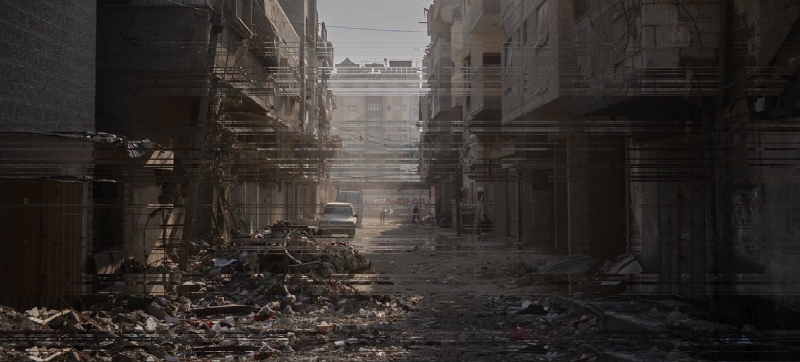- UNRWA Situation Report on Crisis in Gaza & Occupied West Bank |
- Intimidation or bloodshed cannot halt Bangladesh’s march to democracy |
- Khaleda Zia integral to an important chapter in BD history: Yunus |
- Enthusiasm marks Victory Day celebrations across Bangladesh |
- Dhaka-Delhi ties deep; to be shaped by trust, dignity, mutual respect |
UN Security Council to Vote on Gaza Stabilisation Force

Much of Gaza City is uninhabitable after more than two years of war.
The UN Security Council is expected to vote at 5 pm in New York today on a US-sponsored draft resolution that would authorise the creation of an international stabilisation force in the Gaza Strip.
The proposal, building on the 20-point US plan, is intended to restore security, ensure humanitarian access, and begin a sustained process of reconstruction and institutional reform for the enclave following two years of devastating conflict between Israel and Hamas.
A rival draft resolution submitted by Russia is also under formal consideration, but it remains unclear whether the Council will vote on that text this afternoon.
What the US text proposes
The draft would establish an International Stabilisation Force (ISF) working with Israel and Egypt, with an initial two-year mandate.
Its responsibilities would include securing Gaza’s borders, protecting civilians, facilitating humanitarian assistance, supporting the training and deployment of a reconstituted Palestinian police force, and overseeing the permanent decommissioning of weapons held by Hamas and other armed groups in the enclave.
The text also indicates that Israeli forces would fully withdraw once the force has established security and operational control across the territory.
A transitional governance mechanism named the Board of Peace – chaired by President Donald Trump under the US peace plan that underpinned the 8 October ceasefire – would be formed to coordinate security, humanitarian, and reconstruction planning.
This would guide Gaza towards a reformed Palestinian governing authority. The resolution outlines a pathway towards Palestinian self-determination and eventual statehood, linked to accountable governance and reconstruction milestones.
Why it matters
If adopted, the resolution would provide international legal authority for a multinational security mission, seen by potential troop-contributing countries and donors as necessary for deployment. No UN peacekeeping presence is envisaged.
It could represent a decisive transition from active conflict to stabilisation and reconstruction, combining security guarantees with reforms to governance and services.
The vote also tests the Council’s ability to agree on a post-conflict framework for Gaza at a critical diplomatic moment, amid ongoing humanitarian needs and heightened regional tensions.
Washington has reportedly warned that if the Council does not act now, it could lead to renewed infighting and the collapse of the fragile ceasefire.
Key background
The draft draws on recent international proposals calling for steps towards a ceasefire, release of all hostages, demilitarisation of armed groups, and reconstruction led by reformed Palestinian institutions.
Negotiations within the Council have reportedly focused on the governance structure, operational command, sequencing of security tasks, and the extent of involvement of the Palestinian Authority.
Some members have raised concerns regarding external oversight and clarity over the end state of the mission.
Rival Russian draft
Russia has circulated an alternative resolution directing the UN Secretary-General to develop options for a stabilisation force without endorsing the Board of Peace model. It is not yet known whether this text will also be voted on today.
What to watch
Whether the US resolution secures at least nine affirmative votes without a veto from one of the five permanent members of the Council – China, France, Russia, the UK, and the US
Which Member States may commit personnel and equipment for the new force, and on what basis
Israel’s position on the proposed withdrawal sequencing and governance structure
The status and future of the Russian draft should only the US text go to a vote
Humanitarian update
Conditions remain very difficult, with many Gazans struggling to access essentials after heavy rains and flooding affected more than 13,000 families.
At least 9,000 tents, 83,000 tarpaulins, and 59,000 blankets were distributed, but access limits and item restrictions are slowing scale-up ahead of winter.
Food delivery volumes have increased, allowing plans to resume two food parcels plus flour per household, after earlier reductions in the north due to access delays.
Debris teams have cleared 100,000 tonnes, but around 58 million tonnes remain across Gaza, with only half currently accessible.
More than 5,400 metric tonnes of aid were collected between Thursday and Sunday, including shelter, medical, and food items, with the Zikim crossing now reopened after two months.

